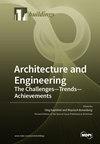Seismic Stability and Sustainable Performance of Diaphragm Walls Adjacent to Tunnels: Insights from 2D Numerical Modeling and Key Factors
IF 3.1
3区 工程技术
Q2 CONSTRUCTION & BUILDING TECHNOLOGY
引用次数: 0
Abstract
The seismic performance of diaphragm walls adjacent to tunnels plays a pivotal role in ensuring the stability of underground infrastructure. This article presents an extensive investigation into the seismic behavior of such diaphragm walls through advanced two-dimensional (2D) numerical modeling. The primary objective is to establish the accuracy and reliability of the numerical model by comparing its results with a reference case history from Tianjin, China. Following successful validation, the study employs rigorous two-dimensional (2D) numerical analyses to examine the response of the diaphragm wall to seismic events while considering crucial factors. These factors encompass the dynamics of pore water pressure, the diverse acceleration histories of earthquakes, varying tunnel positions, and their combined influence on the horizontal displacement of the wall. From our findings, we can conclude that earthquake duration has a more substantial impact on displacement and wall deformation compared to peak ground acceleration (PGA). Longer earthquake durations are associated with greater displacement. In dynamic analyses, the presence of water diminishes soil displacement and concentrates plastic deformation points. The distance between the tunnel and the diaphragm wall significantly affects wall displacement and deformation. The effective distance is approximately 10 m. Our findings can inform better design and construction practices to enhance the stability of underground infrastructure in seismically active regions.邻近隧道的地下连续墙的抗震稳定性和可持续性能:二维数值建模的启示和关键因素
邻近隧道的地下连续墙的抗震性能对确保地下基础设施的稳定性起着至关重要的作用。本文通过先进的二维(2D)数值建模,对此类地下连续墙的抗震性能进行了广泛研究。其主要目的是通过将数值模型的结果与中国天津的参考案例进行比较,确定数值模型的准确性和可靠性。在成功验证后,研究采用了严格的二维(2D)数值分析,在考虑关键因素的同时,研究隔墙对地震事件的响应。这些因素包括孔隙水压力动态、不同的地震加速度历史、不同的隧道位置,以及它们对连续墙水平位移的综合影响。根据我们的研究结果,我们可以得出结论:与峰值地面加速度(PGA)相比,地震持续时间对位移和墙体变形的影响更大。地震持续时间越长,位移越大。在动态分析中,水的存在会减小土壤的位移,并集中塑性变形点。隧道与地下连续墙之间的距离对墙的位移和变形有很大影响。我们的研究结果可为更好的设计和施工实践提供参考,从而提高地震活跃地区地下基础设施的稳定性。
本文章由计算机程序翻译,如有差异,请以英文原文为准。
求助全文
约1分钟内获得全文
求助全文
来源期刊

Buildings
Multiple-
CiteScore
3.40
自引率
26.30%
发文量
1883
审稿时长
11 weeks
期刊介绍:
BUILDINGS content is primarily staff-written and submitted information is evaluated by the editors for its value to the audience. Such information may be used in articles with appropriate attribution to the source. The editorial staff considers information on the following topics: -Issues directed at building owners and facility managers in North America -Issues relevant to existing buildings, including retrofits, maintenance and modernization -Solution-based content, such as tips and tricks -New construction but only with an eye to issues involving maintenance and operation We generally do not review the following topics because these are not relevant to our readers: -Information on the residential market with the exception of multifamily buildings -International news unrelated to the North American market -Real estate market updates or construction updates
 求助内容:
求助内容: 应助结果提醒方式:
应助结果提醒方式:


